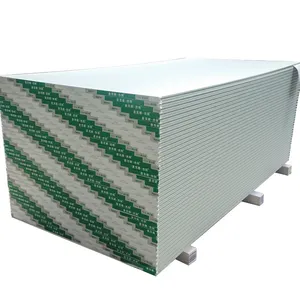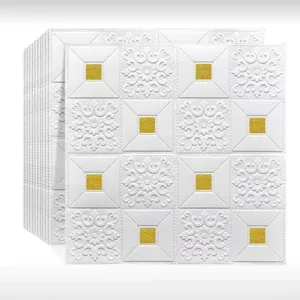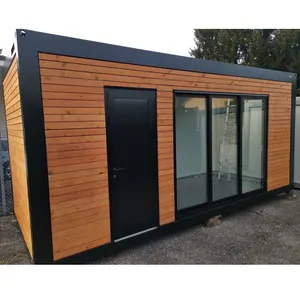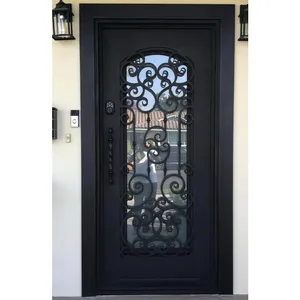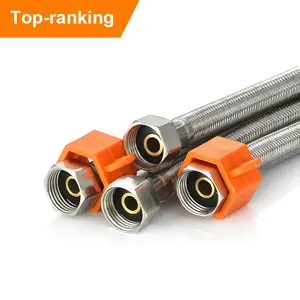Popular in your industry



























































Top categories
About hdpe dr11 pipe
What is Hdpe Pipe Dr11
HDPE Pipe DR11, which stands for High Density Polyethylene Pipe with a pressure rating of DR11, is a type of plastic pipe known for its high-density, strong and yet flexible properties. It is a pipe material that is widely used in various industries, including water supply, gas transport, and chemical conveyance. The designation DR11 refers to the pipe's pressure rating, which indicates the thickness and the strength of the pipe material needed to withstand the pressures associated with fluid conveyance in various systems.
These pipes are constructed by extruding HDPE material into a pipe form, which is then welded together to create a continuous pipeline. The resulting pipe is light-weight compared to traditional materials like concrete or steel, which makes it easier to transport and install. HDPE pipe DR11's durability and resistance to corrosion and chemicals further contribute to its suitability for long-term use in demanding environments.
HDPE pipe DR11 is designed for professionals in construction, engineering, and infrastructure development who require reliable and cost-effective piping solutions. Its ease of joining with heat fusion systems, low installation costs, and long-term performance make it a preferred choice in projects where conventional rigid materials might not be suitable or practical. With the principles of fusion welding, HDPE pipe DR11 can be joined without the need for additional fittings, providing a continuous pipeline that is both strong and adaptable to the needs of the system it serves.
HDPE Pipe DR11: Types, Applications, and Performance
High-density polyethylene (HDPE) pipes are known for their high durability and excellent resistance to various forms of wear and tear. These qualities make them suitable for use in a wide range of applications, from potable water distribution to industrial processes.
-
Types of HDPE Pipe DR11: There are several types of HDPE pipe DR11 available, each with unique properties that make it well-suited for specific tasks:
-
PE 100 Pipe DR11: This type is designed for high-pressure applications due to its high-density polyethylene composition, which enhances its strength. It is often used in gas distribution systems and for water supply lines where a high flow rate is needed.
-
PE 80 Pipe DR11: With a slightly lower density than PE 100, this type is more flexible and easier to work with during installation. It is commonly used in underground cable and electrical conduits.
-
PE 63 Pipe DR11: This grade is widely utilized in the field of of agriculture for irrigation purposes due to its balance between flexibility and pressure resistance. It can also be found in municipal water and sewer systems.
Each of these types comes with specific standards such as ISO 4427 or ASTM D3035, which denote their performance characteristics and the methods used in their manufacturing or installation.
How to choose Hdpe Pipe Dr11
Selecting the right HDPE Pipe DR11 involves careful consideration of the specific requirements of your project. Here are some key factors to keep in mind:
-
Application Needs: Determine the intended use for the pipe. If it's for pressurized water in a municipal project, you'll need a higher DR rated pipe such as DR11 or higher.
-
Material Quality: The quality of the material affects the performance and lifespan of the pipe. Look for suppliers who offer high-density polyethylene that meets industry standards for your region.
-
Environmental Factors: Consider any environmental factors that could impact the pipe's longevity and functionality. For instance, if UV exposure is a factor, ensure that the pipe has UV-resistant properties.
-
Installation Requirements: The method of installation (e.g., trenchless) might influence your choice. Ensure that the selected pipe type aligns with the installation needs of your project.
-
Cost-Efficiency: While initial costs might be higher than those of other materials like steel, HDPE's long-term benefits in terms of durability and maintenance can make it a more cost-effective choice.
About Hdpe Pipe Dr11 on Alibaba.com
Alibaba.com stands out as a global marketplace connecting businesses with a wide array of suppliers offering HDPE Pipe DR11 products. With a focus on facilitating international trade, Alibaba.com ensures that buyers can find the right product that meets their specifications—be it for municipal water systems or industrial applications.
The platform's vast selection allows businesses to compare options from numerous suppliers and negotiate terms that suit their unique requirements. Furthermore, Alibaba.com's Trade Assurance service provides an added layer of security by safeguarding payments until order fulfillment is confirmed.
Choosing Alibaba.com means tapping into a world where businesses can find high-quality products while benefiting from convenient features such as mobile buying options and local language communication tools. The site's commitment to helping small and medium-sized enterprises thrive is evident through its tailored trading experiences and specialized benefits that address different stages of business growth. When it comes to sourcing HDPE Pipe DR11 products, Alibaba.com offers a solution that empowers businesses to focus on their core operations without compromising on quality or reliability.
Common FAQs for Hdpe Pipe Dr11
What is the difference between SDR11 and SDR17 HDPE pipes?
SDR11 and SDR17 are two terms used to describe the wall thickness and pressure rating of HDPE pipes. SDR11 pipes are suitable for higher pressure applications, while SDR17 pipes are used for standard pressure requirements. The appropriate type is chosen based on the specific needs of the project.
How do I determine the right size of HDPE pipe for my project?
The size of the HDPE pipe needed depends on the volume of fluid to be transported and the flow rate. Calculations should be based on these factors, and it may be necessary to consult with a professional to ensure accurate sizing.
What are the benefits of using HDPE pipes over other materials?
HDPE pipes offer several advantages over other materials, including high durability, resistance to corrosion, and the ability to handle various types of weather conditions. They are also lightweight, which can reduce transportation costs and ease of installation.
Can HDPE pipes be used for both above and below-ground installations?
Yes, HDPE pipes are suitable for both above-ground and below-ground installations. However, the type of HDPE pipe used should be compatible with the specific application's requirements for pressure rating and environmental conditions.
Are there specific standards that HDPE pipes must meet?
HDPE pipes must meet various international standards, including ISO 9001 for quality management and ISO 4427 for water supply. Other standards may apply depending on the specific application and region where the pipes will be used.
How long do HDPE pipes typically last?
HDPE pipes are known for their long service life; however, longevity can vary significantly based on the application and environmental factors such as soil conditions and installation methods. Properly installed, they can last several decades.
What should I consider when choosing between a coilable HDPE pipe or individual sticks?
When choosing between a coilable HDPE pipe and individual sticks, consider factors such as the ease of handling during installation, particularly in confined spaces; the portability for temporary water supply needs; and whether the project requires customization or unique lengths.
Can HDPE pipes be customized for specific projects?
Yes, HDPE pipes can often be customized to meet specific requirements for a project such as unique lengths or specialized fittings. Suppliers may offer customization services to cater to unique project needs.
Is it possible to repair HDPE pipes if they are damaged?
Yes, HDPE pipes can be repaired using various methods depending on the size of the damage. Small punctures may be repaired with patching material, while larger damages might require cutting out and replacing a section of the pipe.
What types of joint systems are available for HDPE pipes?
There are several types of joint systems available for HDPE pipes including butt fusion, electrofusion, and socket fusion. The system chosen should be based on the specific requirements of the project.
How does temperature affect the performance of HDPE pipes?
Temperature can impact the performance of HDPE pipes, with higher temperatures potentially impacting the material's flexibility and durability. It's important to choose a pipe designed to withstand the temperature range in which it will be used.
What role does UV exposure play in the deterioration of HDPE pipes?
UV exposure can lead to degradation of HDPE pipes over time, causing them to become brittle and lose their color. Proper installation techniques that include UV resistance can minimize this issue.
Are there any special considerations when installing HDPE pipes in environmentally sensitive areas?
When installing HDPE pipes in environmentally sensitive areas such as high water tables or areas with corrosive soil, additional protective measures may be necessary to prevent damage or failure.
Can I use HDPE pipes for both potable water and wastewater systems?
Yes, HDPE pipes can be used for both potable water (such as drinking water) and wastewater systems. However, they must meet different standards and may require additional protective layers or coatings depending on the application.
What is the typical lifespan of an underground HDPE pipe?
The lifespan of an underground HDPE pipe can vary but is generally expected to last several decades due to its durability and resistance to environmental factors.
Can I find environmentally friendly recyclable options for HDPE pipes?
HDPE pipes are recyclable at the end of their service life. Look for suppliers that offer recycling programs or check local regulations for proper disposal guidelines.
How does water pressure affect the choice of an HDPE pipe?
Water pressure can affect the choice of an HDPE pipe in terms of its pressure rating. It's important to select a pipe that can handle the specific water pressure requirements of your system.
Are there color options available for HDPE pipes?
Yes, HDPE pipes come in various color options. The standard color is black but other colors such as yellow or orange may be available depending on supplier offerings.
What is the importance of using reinforced HDPE pipes?
Reinforced HDPE pipes have an added layer of material to enhance strength and rigidity. They are used in applications where extra support is needed during installation or where the pipes might be subject to higher stresses.
Can I use HDPE pipes in high-temperature applications?
HDPE has excellent resistance to temperature changes but is not recommended for applications where the fluid contents exceed 140°F or where fire resistance is a requirement.
-

